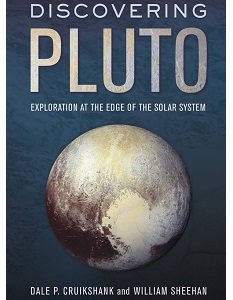The International Astronomical Union may no longer regard Pluto as a planet, but that certainly hasn’t decreased its attraction for scientists or authors; in fact, it may even have enhanced its credentials. As the authors opine, “Except perhaps for Mars, no other planet seems of greater interest to the public”.
This book traces the story of Pluto from the historical (c.1900) search for trans-Neptunian objects to the New Horizons flyby in 2015. Although the chapter design is seamless, it is very much a book of two parts: the first 300 or so pages covers the work of Earth-based astronomers while the final hundred deals with space technology. In itself this is interesting, because it reminds us that astronomy has followed the same route for all planets (or ‘dwarf planets’ in the case of Pluto). Initially they were blurry blobs in early telescopes, then more detailed but unstable images (because of the Earth’s atmosphere) and finally, thanks to spacecraft-borne cameras and other instruments, they became the stuff of coffee-table books.
Although Pluto has not reached ‘coffee-table status’ yet, this volume depicts it - through colour and monochrome images – as an interesting world that could be described as a cross between the Moon and Mars. It has craters and mountains and mare-like areas, but is subtly coloured in yellows, oranges and reds, due of course to its chemical composition. Unlike many science-based volumes, the text is extremely accessible, probably thanks to co-author Sheehan who has written many such books.
Complete with 40 pages of chapter notes and an 11-page index, this could be your ideal introduction to the planet (sorry, dwarf planet) Pluto.











